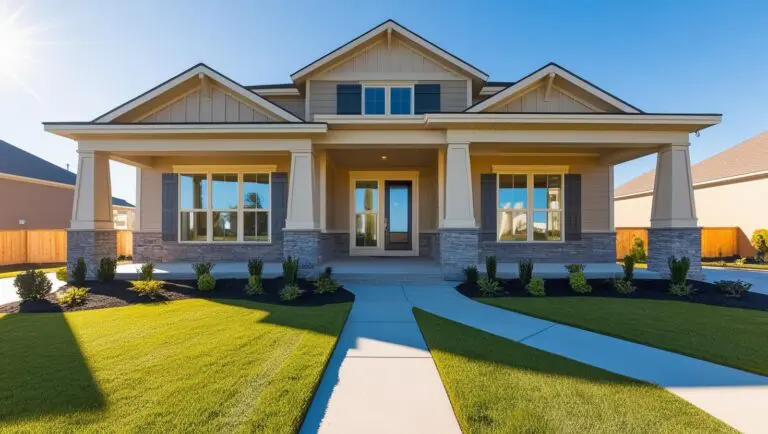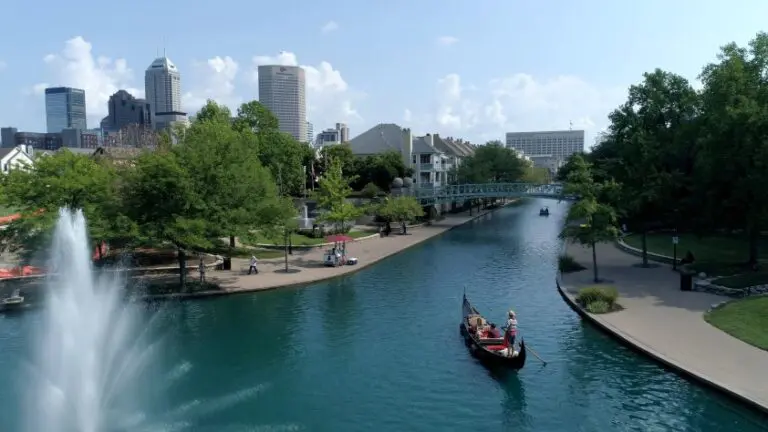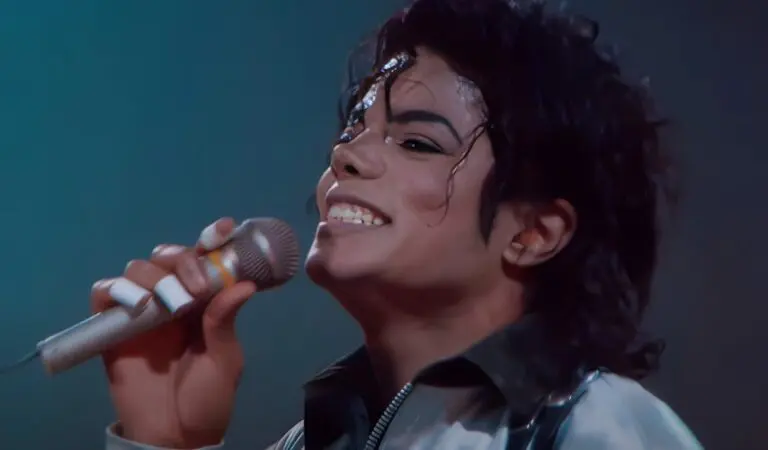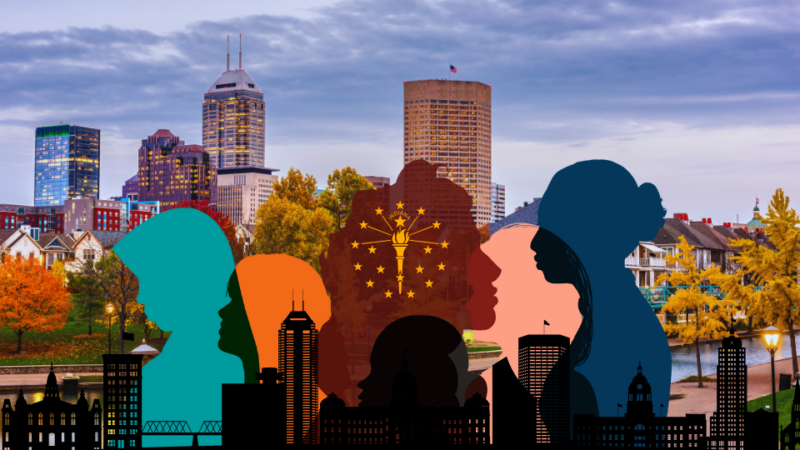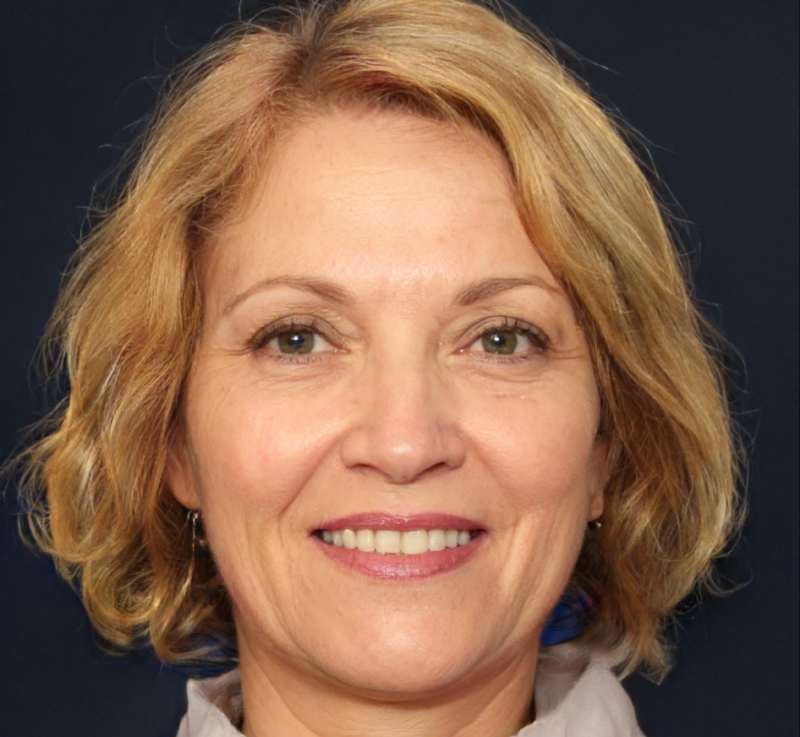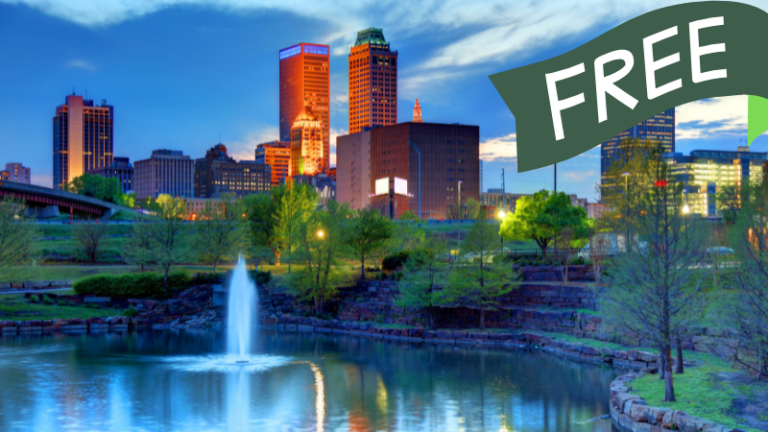Let’s chat about Indiana, the Hoosier State. There’s so much to say about the people who call it home – nearly 6.9 million of them. When I first visited this state, I noticed that it offers a mix of urban vibrancy and rural tranquility, making it a fascinating state to explore.
Numbers tell stories, and in this case, they reveal a lot about the growth, diversity, and quirks of Indiana’s population.
Table of Contents
ToggleKey Takeaways
- Indiana’s population reached 6.89 million in 2025, growing steadily at 0.33% annually.
- 181 people per square mile.
- Minority groups, especially Hispanics, are the fastest-growing population in Indiana.
- The median income is $45,900,.
- Only 18% of residents hold bachelor’s degrees.
- Over 350,000 veterans live in Indiana.
- Nearly half of the residents are married.
- Christianity dominates at 72%.
It’s a Growing State
According to World Population Review, the Indiana population stands at 6,892,120 in 2025. Back in 2010, it was about 6.48 million, reflecting a consistent rise over the years. Since 2015 alone, the population has grown by over 272,000 people.
Love this #Indiana population spike map from @MrPecners. @WestLafayetteIN is crazy. pic.twitter.com/dfbPELK2KZ
— Tim Franklin (@Algebr0) October 30, 2024
While the growth isn’t explosive, it reflects stability, driven by factors like job opportunities, a relatively low cost of living, and a family-friendly environment.
Indiana’s growth contrasts with some states experiencing population stagnation, proving that steady progress can sometimes be just as impactful.
City
Population
Percentage of State Population
Indianapolis
888,578
13.33%
Fort Wayne
269,994
4.05%
Evansville
115,332
1.73%
Fishers
104,094
1.56%
South Bend
103,395
1.55%
Carmel
102,296
1.53%
Bloomington
78,840
1.18%
Hammond
77,879
1.17%
Gary
74,879
1.12%
Lafayette
72,168
1.08%
Welcome to the 16th most densely populated state in the U.S
Indianapolis is 61 square miles larger than NYC and has 10% of its population. It’s just such an inefficient way to run a city. (Same Scale) pic.twitter.com/ZWG349HFRB
— Hayden (@the_transit_guy) January 29, 2023
Ever wondered how crowded Indiana feels? With 181 people per square mile, it’s the 16th most densely populated state in the U.S. That’s a lot of people for a state known for its cornfields and open spaces!
Despite the density ranking, it never feels overwhelming thanks to its mix of urban areas and expansive rural regions. Indiana’s 36,418 square miles of land make it the 38th largest state in the country.
Who Lives Here?
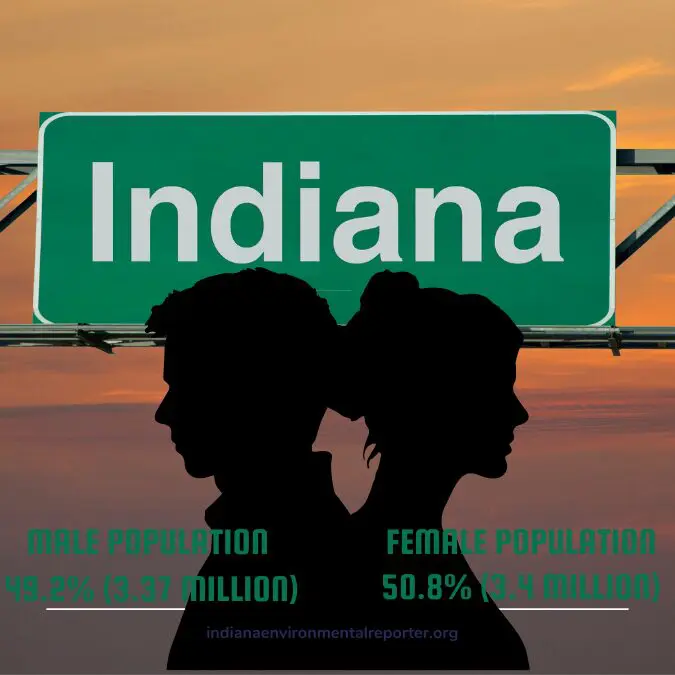
The numbers highlight a fascinating demographic shift, showing a state that is becoming increasingly representative of America as a whole.
By Gender
- Female population: 50.8% (3.4 million)
- Male population: 49.2% (3.37 million)
Women tend to outlive men slightly, with a median age of 39.1 years for women compared to 36.8 for men.
The state’s median age overall, at 37.4 years, reflects a relatively balanced mix of younger and older residents. According to the ACS 5-Year Estimates, 19.17% of the population are aged under 15, 20.66% range from 15 to 29 years old, 44.01% are between 30 and 64 years old, 14.23% fall into the 65 to 84 age bracket, and 1.94% are 85 years old or older.
Racial Composition
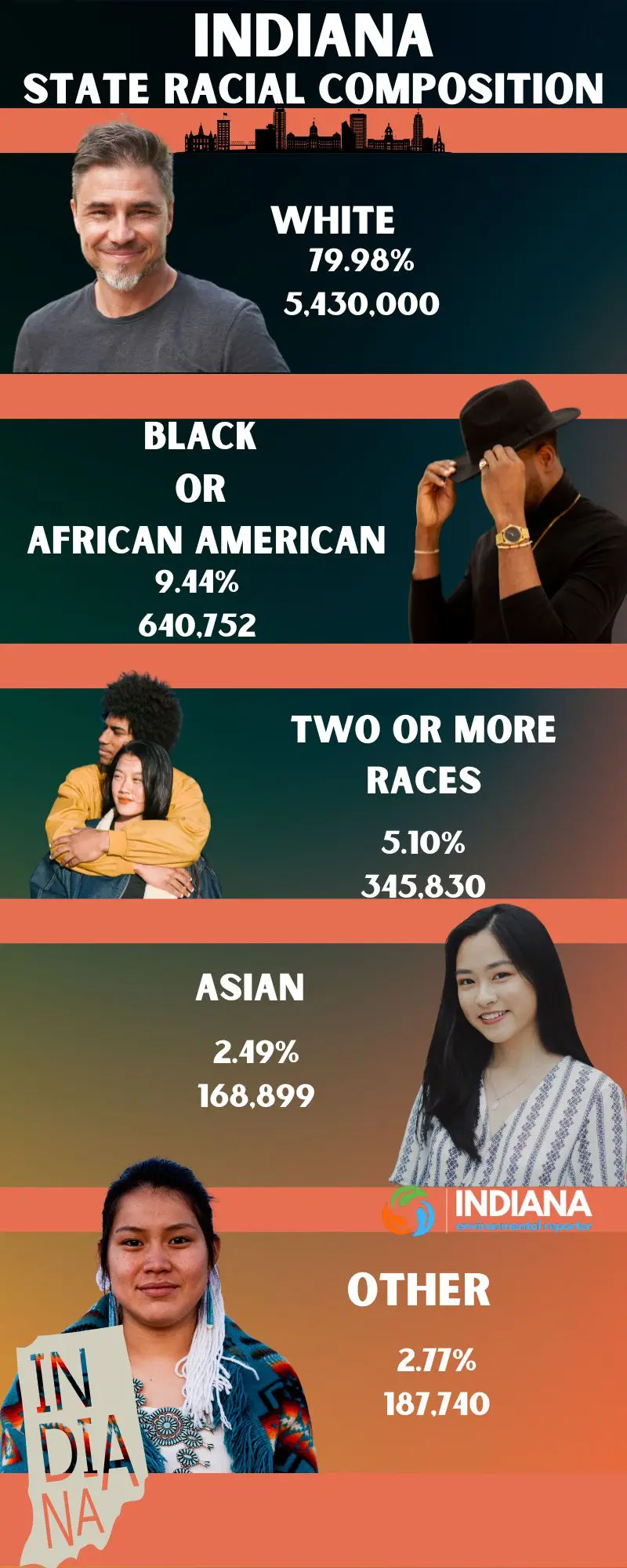
Race
Percentage
Population
White
79.98%
5,430,000
Black or African American
9.44%
640,752
Two or More Races
5.10%
345,830
Asian
2.49%
168,899
Other
2.77%
187,740
*This makes Indiana a state where multigenerational living thrives, with family ties often playing a significant role in the community structure.
Speaking About Religion, Family, and Language…
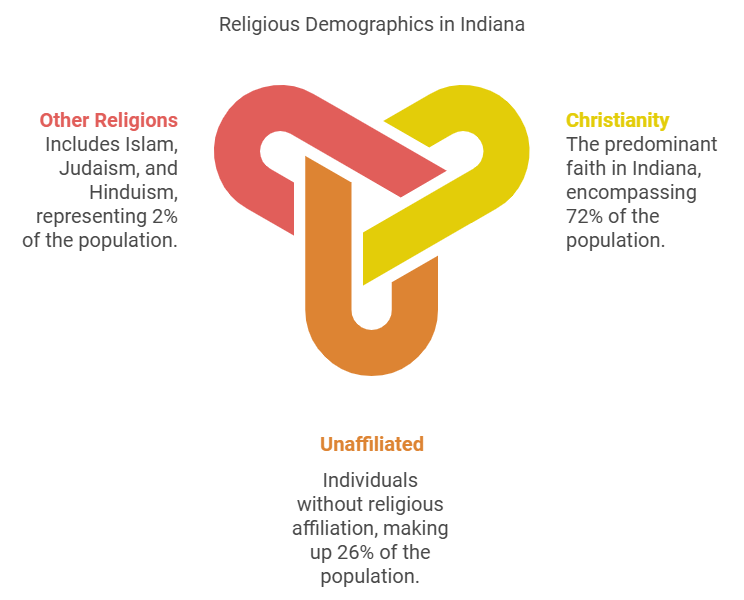
Roughly 72% identify as Christian, making churches key community anchors. Many Hoosiers are part of close-knit faith-based communities, where traditions and celebrations bring neighborhoods together. Meanwhile, 26% are unaffiliated with any religion..
How Many Languages Does Indiana Speak?
The vast majority (90.77%) speak only English at home. Spanish speakers make up 4.79%, and other languages such as Chinese, Arabic, and German contribute to the remaining 4.44%. This multilingual population is a testament to Indiana’s increasing diversity.
Cities like Indianapolis and South Bend are seeing more non-English-speaking communities grow, bringing exciting cultural exchanges to the forefront. Restaurants, festivals, and schools are increasingly reflecting this linguistic variety.
Let’s Talk About Income and Economic Realities
Here’s a snapshot of financial life among the Indiana population: Median income: $45,900
- Men: $54,990
- Women: $37,631
The poverty rate sits at 12.3%, but it hits different groups unequally:
Race
Poverty Rate (%)
White
9.9%
Black
25.1%
Hispanic
18.29%
Asian
14.75%
Ranks 3rd Material Mortality in the nation.
Ranks 27th for child well-being, which includes poverty
Ranks 29th in the nation for health care access
Ranks 30th- Indiana has the highest rate of gun violence in the country.
Ranks 40th in the nation for health care… pic.twitter.com/Bq0s2EgmQx— ᖇᗴᗷᗴᒪᒪᎥᗝᑎ ᗩᒪᒪᎥᗩᑎᑕᗴ (@themrsgenx) November 9, 2024
Education in Indiana
Education is a mixed bag, reflecting areas of both strength and needed improvement.
- High school graduates: 91.8% of White residents lead the charge.
- Bachelor’s degree: 57.08% of Asians have one, the highest rate among groups.
However, only 18% of the Indiana population holds a bachelor’s degree, while graduate degrees are even less common (10.23%). Efforts to boost higher education attainment include scholarship programs and partnerships between colleges and local industries.
The state is also focusing on vocational training, addressing the needs of its manufacturing and agricultural sectors.
Urban and Rural – Best of Both Worlds
Indianapolis Is The Star of the State
Indianapolis is home to 860,000 residents. It’s the economic powerhouse and cultural heartbeat of the state. Known for its world-class museums, the Indianapolis 500, and a thriving downtown scene, the city embodies the future of Indiana.
Indianapolis has seen significant redevelopment over the years, making it a hub for innovation and growth.
Marion County
With 900,000 people, Marion County isn’t just Indiana’s largest—it’s its most influential. The county includes diverse neighborhoods, from affluent suburbs to historic districts.
Some fresh news you can find HERE.
Indiana’s Strong Veteran Community
The Indiana population has a strong veteran community, with 352,716 individuals who’ve served.
The largest group is Vietnam veterans (123,293), followed by those from the First Gulf War (70,651) and the Second Gulf War (68,412). Programs for veterans, including healthcare and housing support, remain vital to their well-being.
Looking For A City With Family-Oriented Values? Look No Further…
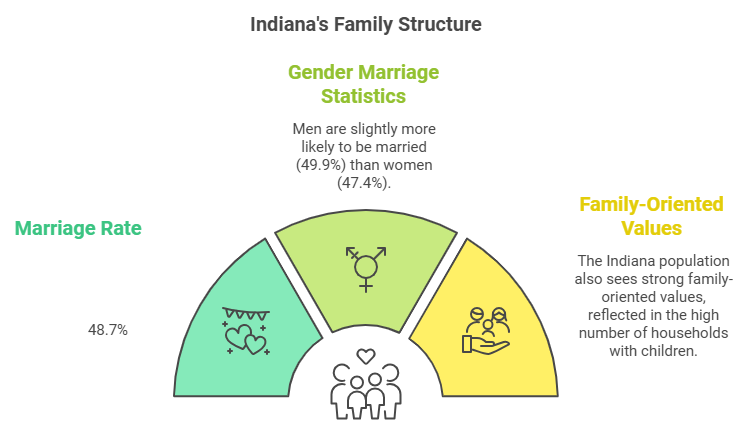
Marriage remains a cornerstone of many Hoosier households:
- Marriage rate: 48.7%
- Men are slightly more likely to be married (49.9%) than women (47.4%).
The Indiana population also sees strong family-oriented values, reflected in the high number of households with children.
Employment and Labor Force
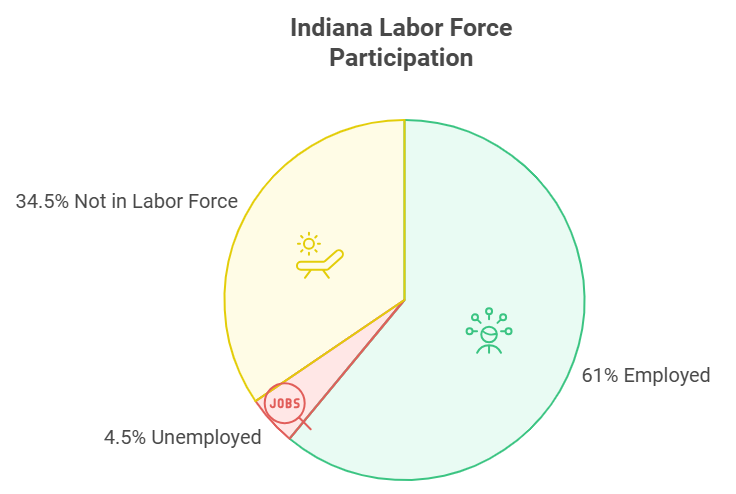
About 63.9% of the Indiana population (adult population) participates in the labor force, with an employment rate of 61%. Unemployment, while present, stands at 4.5%, slightly below the national average.
Manufacturing remains the backbone of the state’s economy, but the tech and healthcare sectors are rapidly expanding, particularly in urban areas.
Indiana’s Place of Birth – Where People Are From
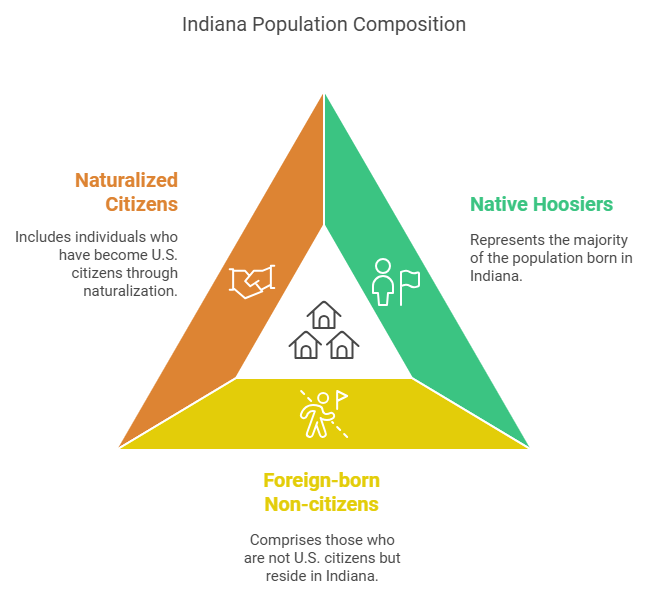
A whopping 94.43% of Hoosiers were born in the U.S., with 67.6% native to Indiana itself. Of the foreign-born population (5.57%), non-citizens make up 3.22%, while 2.35% have become naturalized citizens.
Methodology
Our methodology centers on analyzing Indiana’s population data using reliable sources like the U.S. Census Bureau and state demographic reports. We examined key metrics such as population growth, density, gender distribution, racial composition, and socioeconomic indicators to understand trends and disparities.
By comparing data over time and across groups, we highlighted significant changes and challenges. Through data visualization and synthesis, we ensured the information is clear and accessible.
What Makes Indiana Special?
Beyond the stats, what makes Indiana stand out? It’s the people: resilient, warm, and deeply connected to their communities. The Hoosier State is a place of contrasts that somehow work in harmony.
Sources
1. World Population Review – Indiana Population 2024
2. Indiana Historical Bureau – What is a Hoosier
2. Neilsberg – Indiana Population by Age
Related Posts:
- Fort Wayne Population 2025 - Growth, Trends, and…
- South Bend Population 2025 - What’s Driving Its Growth
- Lafayette, Indiana Population Statistics 2025 -…
- Indiana Car Accident Statistics 2025: Key Statistics…
- Indiana Lung Cancer Statistics 2025: Key Data and Trends
- Gary, Indiana Population in 2025 - Latest Census…


